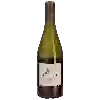
Winery Jean Claude MasSud de France Rosé
In the mouth this pink wine is a with a nice freshness.
This wine generally goes well with vegetarian, appetizers and snacks or lean fish.
Taste structure of the Sud de France Rosé from the Winery Jean Claude Mas
Light | Bold | |
Dry | Sweet | |
Soft | Acidic |
In the mouth the Sud de France Rosé of Winery Jean Claude Mas in the region of Pays d'Oc is a with a nice freshness.
Food and wine pairings with Sud de France Rosé
Pairings that work perfectly with Sud de France Rosé
Original food and wine pairings with Sud de France Rosé
The Sud de France Rosé of Winery Jean Claude Mas matches generally quite well with dishes of pasta, vegetarian or appetizers and snacks such as recipes of spaghetti bolognese, light tuna-tomato quiche (without cream) or rillettes of sardines.
Details and technical informations about Winery Jean Claude Mas's Sud de France Rosé.
Discover the grape variety: Merzling
A cross between Seyval and FR 375-52 (Riesling x Pinot Gris or Rülander) obtained in Germany in 1960 by Johannes Zimmermann. It can be found in Denmark, Belgium, Switzerland, Lithuania, the Czech Republic, etc. In France, it is practically unknown.
Informations about the Winery Jean Claude Mas
The Winery Jean Claude Mas is one of of the world's great estates. It offers 148 wines for sale in the of Pays d'Oc to come and discover on site or to buy online.
The wine region of Pays d'Oc
Pays d'Oc is the PGI for red, white and rosé wines that are produced over a wide area of the southern coast of France. The PGI catchment area corresponds roughly to the Languedoc-roussillon">Languedoc-Roussillon wine region, one of the largest wine regions in France. The area covers all wines that are not produced under the strict laws that govern AOC-level appellations in the regions: among them, Corbières, Minervois and the Languedoc appellation itself. The Pays d'Oc PGI is arguably the most important in France, producing the majority of the country's PGI wines.
The word of the wine: Amber
(1) A colour close to amber, sometimes taken on by white wines aged for a long time, or by oxidising prematurely. (2) A term used on the label to designate white Rivesaltes aged for at least thirty months in an oxidizing environment.














